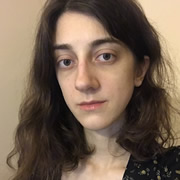Eye movement desensitization and reprocessing (EMDR) is a type of therapy that employs bilateral stimulation (usually eye movements) to help the brain reprocess and properly store traumatic memories, reducing the symptoms of PTSD. Originally designed for trauma, it’s also been applied to addiction, with the technique used to reprogram memories of addiction in order to desensitize the patient to triggers and reduce cravings.

What is EMDR therapy?
Eye movement desensitization and reprocessing (EMDR) is a type of psychotherapy developed by American psychologist Francine Shapiro. In 1987, Shapiro realized that her own eyes rapidly when she recalled a distressing experience.[1] By bringing those eye movements under voluntary control she found she could reduce the negative emotions evoked by the memory.[2]
From that experience, Shapiro developed a program of psychotherapy for trauma treatment that involves the therapist guiding the client in rapid, bilateral eye movements—or other bilateral stimulation, such as hand tapping—while asking them to concentrate on the disturbing memory.
Advocates of EMDR claim that these movements desensitize the individual to the memory and change the way it is stored in the brain, leading to a reduction in symptoms of post-traumatic stress disorder (PTSD).
How does EMDR therapy work?
Shapiro explained the observed effectiveness of EMDR through the adaptive information processing (AIP) model. The model holds that psychopathology emerges from the dysfunctional storage of upsetting memories.
Under usual circumstances, the human brain—specifically the limbic system and the prefrontal cortex—can quickly and easily process and integrate experiences, even adverse ones.
But in the case of very distressing events, this innate information processing system is interrupted: the prefrontal cortex is flooded with the stress neurotransmitters adrenaline and cortisol and stops processing the memory. Instead, the information remains in a raw state, stored in fragments throughout the brain, alongside the original emotions and physical sensations that occurred during that event.
The brain returns to the fragmented memory, especially the emotional parts, trying repeatedly to process it but unable to without the missing parts. This maladaptive storage leads to the symptoms of PTSD, including flashbacks, intrusive memories, nightmares, and dissociation. The memories, when activated, are accompanied by the hyperarousal and reactivity symptoms of PTSD (hypervigilance, heightened startle response, etc.)
However, the AIP model hypothesizes that the bilateral stimulation of EMDR, including eye movements and tactile and auditory stimulation, can activate all regions of the brain and increase communication between them. If the individual focuses on the distressing memory during this bilateral stimulation, the brain locates all fragments of the memory and reunites them, finally allowing them to be properly stored, in the same way a non-traumatic memory would be.[3]
MDR treatment components
EMDR is usually delivered across six to 12 sessions, held once or twice a week.[4]
It has an eight-phase structure.
- 1. History taking and treatment planning: The therapist and client discuss the client’s history and decide which traumatic memories will be addressed in treatment. The therapist may use techniques such as direct questioning, float back, and affective scan to access and map memories, including those outside of consciousness.
- 2. Preparation or stabilization: The therapist explains the EMDR process and sets expectations for treatment. During this phase, the therapist assesses the client’s readiness for processing these traumatic memories and establishes a safe therapeutic relationship. Together, the therapist and client develop specific techniques the client can use to cope with the emotional disturbance caused by the treatment.
- 3. Assessment: The event for reprocessing—known as the target event—is identified, with any images, sensations, and feelings that it conjures. The therapist may ask: “What image is most consistently evoked by the memory?” The client’s baseline reaction to the memory is measured, using the Subjective Units of Disturbance (SUD) and Validity of Cognition (VOC) scales.
- 4. Desensitisation: Bilateral stimulation begins while the client focuses on the traumatic memory. The therapist may guide the client in side-to-side eye movements or in tapping their body with their hands. The bilateral stimulation continues until the client’s Subjective Units of Disturbance falls to zero. During this phase, new images, sensations, and feelings may emerge.
- 5. Installation: The therapist helps the client install a positive belief about the memory into their thought process to replace a negative belief. Together, the client and therapist focus on strengthening the positive belief until it feels completely true.
- 6. Body scan: The client holds in their mind the traumatic event and the positive belief while scanning their body from head to toe. This process determines whether the traumatic event still evokes a somatic response, such as raised blood pressure, elevated heart rate, or muscle tension. If a negative reaction is detected, sessions of bilateral stimulation will continue.
- 7. Closure: Every session concludes with closure, with the client guided back to a state of calm.
- 8. Reevaluation: Each session after reprocessing begins with the therapist and client discussing the recently processed memories to verify that the client’s distress remains low and they’re continuing to have positive thought patterns. They also discuss future target events and directions for continued treatment.[5][6]
What conditions is EMDR used to treat?
EMDR is primarily used to treat post-traumatic stress disorder (PTSD). But it may also be used to treat the following conditions:
- Anxiety disorders such as generalized anxiety disorder (GAD), panic disorders, and phobias
- Depressive disorders such as major depressive disorder (MDD)
- Obsessive-compulsive disorder
- Dissociative disorders such as depersonalization-derealization disorder (DPDR) and dissociative identity disorder (DID)
- Personality disorders such as borderline personality disorder (BPD) and avoidant personality disorder
- Eating disorders such as anorexia nervosa, bulimia nervosa, and binge eating disorder
- Gender dysphoria
- Grief
- Addiction[7]
- Pain, including chronic pain, acute pain intensity, and phantom limb pain[8]
Dangers of EMDR therapy
The risks of EMDR therapy are very minor for most patients. Some negative effects may include:
- Intense emotions during sessions, which may continue afterward, for hours or days
- Discomfort during sessions, including sweating and muscle tension
- Emergence of additional traumatic memories
- Feeling tired after sessions
- Feeling more emotionally sensitive and vulnerable
- Vivid dreams[9]
Your therapist should teach you coping mechanisms to deal with these side effects.
In patients with dissociative disorders, EMDR can be riskier. In these patients, EMDR should only be used as part of an overall treatment plan and should not be given too early. Premature use of EMDR in dissociative clients can cause breaches of dissociative barriers, the emergence of new alternate personalities, flooding (overwhelming emotions from unprocessed memories), and destabilization.[10]
EMDR for addiction treatment
Two different forms of EMDR are used to treat addiction: standard trauma-focused EMDR and a variation called addiction-focused EMDR. They may be offered together as part of a treatment plan.[11]
Trauma-focused EMDR (TF-EMDR) can address the traumatic experiences that underly many addictions. PTSD and addiction often occur together. They complicate treatment for each condition and lead to poorer outcomes.
- Among patients with substance use disorders, between 25% to 34% have been found to have PTSD.[12]
- Even more patients have experienced traumatic events but haven’t been diagnosed with PTSD. One study found that 97.4% of patients seeking treatment for addiction had experienced a stressor that could lead to it (a criterion A stressor under the DSM-IV: death, threatened death, actual or threatened serious injury, or actual or threatened sexual violence) while just 36.6% had a PTSD diagnosis.[13]
Additionally, addiction-focused EMDR (AF-EMDR) is an adaptation of standard EMDR that targets non-trauma memory representations of addiction, including cravings, triggers, pleasant memories of substance use or other addictive behaviors, fear of relapse, and a sense of helplessness toward the addiction.[11]
Similar to how stimuli that remind people of trauma can elicit strong emotions, memories developed over the course of addiction can also be triggered and cause strong urges. EMDR can therefore be applied to these memories of addiction—both positive and negative—in order to desensitize the individual to them and consolidate them in the brain’s storage system. The reprocessed memory, when properly stored, can provoke fewer urges and less addiction behavior.[14]
Effectiveness of EMDR for addiction treatment
EMDR, both trauma-focused and addiction-focused, has been studied in patients with addictions to alcohol, opiates, cocaine, benzodiazepines, tobacco, gambling, the internet, and sex, both with and without PTSD and traumatic histories. Evidence is preliminary but promising.
In general, in patients with addictions and trauma, trauma-focused EMDR has been found to be successful in treating their PTSD symptoms but has more limited effects on addiction outcomes.[11]
However, a few studies have shown promising effects on addiction in traumatized patients. In a 2015 study, 150 people with trauma histories (41% of whom had PTSD) who were arrested for non-violent drug-related crimes were offered TF-EMDR. Among those who received EMDR, recidivism was 12%, compared to 33% among those who declined the treatment.[15]
Research into addiction-focused EMDR is also scant. Only one randomized controlled trial (RCT) has been completed but its results were promising. 34 alcohol-dependent patients receiving inpatient treatment were randomly assigned to two groups, one of which received two sessions of EMDR. That group experienced fewer cravings and had a lower relapse rate during the one-month follow-up.[16]
Some case reports also suggest the efficacy of addiction-focused EMDR. In one, four patients in a 10-week inpatient treatment program for gambling received three sessions of AF-EMDR, targeted at triggering situations and the urge to initiate gambling behaviors. After treatment, their self-reported gambling urges, depression, anxiety, and impulsiveness were reduced and all four maintained abstinence from gambling during the six-month follow-up.[17]
Where to find EMDR
EMDR is offered by trained therapists. The EMDR International Association maintains a searchable registry of qualified practitioners offering individual appointments.
EMDR may also be offered as part of an inpatient mental health or addiction treatment program. However, not all programs offer it. If you’re specifically interested in EMDR, you should inquire about the program's treatment strategies.
Will my insurance cover EMDR?
Out-of-pocket costs for EMDR range from $100 to $300 per session, depending on where you live. So you’ll probably be eager to know if your insurance will foot the bill.
If your insurance covers therapy, it likely covers EMDR therapy as part of trauma treatment. Most insurance policies covering mental health therapy don’t distinguish between standard talk therapies such as cognitive behavioral therapy (CBT) and EMDR. However, they may only cover therapy sessions of 60 minutes and compared to other forms of psychotherapy, EMDR therapy requires longer sessions, up to 90 minutes. In those cases, you may have to cover part of the cost yourself.[18]
Medicare often covers EMDR but not in every case. The program will consider whether EMDR is medically necessary.[19]
EMDR may also be covered by your insurance as part of addiction treatment. Under the Affordable Care Act, all health insurance policies must cover at least part of the treatment of substance use disorders. This may include inpatient rehab facilities where EMDR is offered.
Contact your insurer for more information about which treatments and practitioners your policy covers.



-guide-detail.jpg?v=1722503307)
